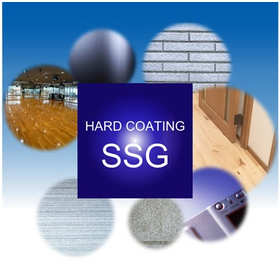Non-fraying, non-shifting glass cloth.
Glass cloth with reduced fraying during cutting, misalignment, and shifting during layering. Improved production efficiency and work environment can be expected.
Glass cloth is often used in applications such as cutting and laminating during molding processes. However, fraying at the edges of the cut cloth, misalignment between the layers of laminated cloth, and the potential for quality defects and fiber debris can worsen the working environment. Currently, methods such as applying liquid resin during pretreatment or laminating with hot melt sheets are being used, but both approaches are cumbersome. Additionally, since the resin adheres to the entire surface, there is a risk of hindering the permeability of the matrix resin. Nitto Boseki has developed a glass cloth (Glass Cloth DOT) that addresses the above issues, requiring no preparation in the molding process, preventing fraying during cutting, avoiding misalignment during lamination, and can be used directly for the molding of preforms. It is flexible and allows for good permeability of the matrix resin.
basic information
Below is an example, but both the glass cloth and resin composition can be adjusted according to the purpose. Carbon cloth and organic fibers are also possible. Product Overview: Glass cloth with hot melt resin attached in dot form. Glass cloth weight: 209g/m² Resin: Polyamide Melting point: 100℃
Price range
Delivery Time
Applications/Examples of results
There is a proven track record of using glass cloth for various molding materials. It is effective in improving process load and work environment. There are also examples of using it as a reinforcement material by bonding with hot melt adhesive.
catalog(2)
Download All CatalogsRecommended products
Distributors
Under our management philosophy of 'creating a culture of healthy and comfortable living,' our group aims to enhance its value as a social entity and continue contributing to the realization of a prosperous society. Based on this fundamental policy, we have established our long-term vision, 'Big VISION 2030,' which outlines the image we want to achieve by 2030. We strive to become a global niche No. 1 that contributes to the realization of a sustainable society in the fields of 'environment and energy,' 'digital society,' and 'health, safety, and security





















